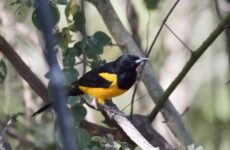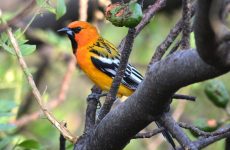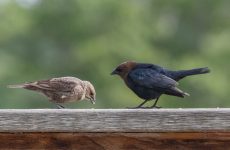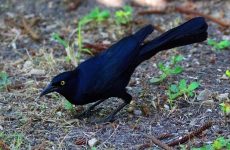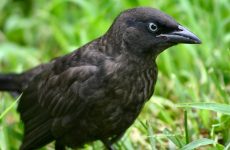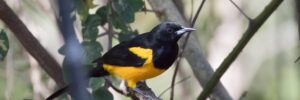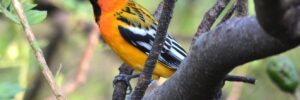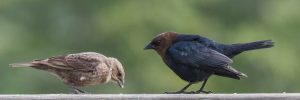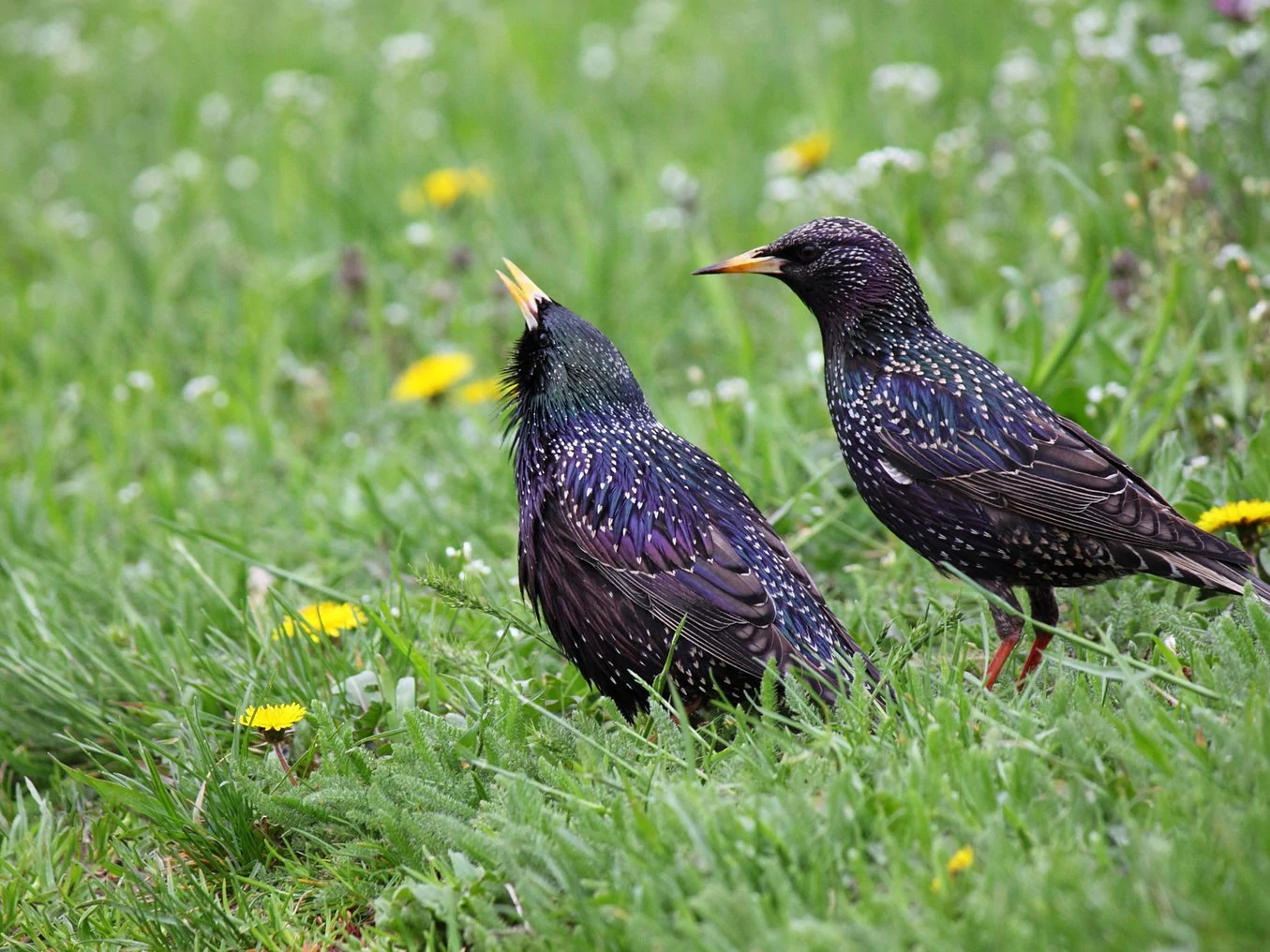
European Starlings are not native but are now one of the most numerous songbirds. They are stocky blackbirds with iridescent purple, green, and blue tones.
- Sturnus vulgaris
- Length: 7.9-9.1 in (20-23 cm)
- Weight: 2.1-3.4 oz (60-96 g)
- Wingspan: 12.2-15.8 in (31-40 cm)
Range
European Starlings live in all of North America, except the north of Canada and Alaska.
Habitat And Diet
They are considered a pest due to their aggressive behavior, and they fly in large, noisy flocks. You can often spot them perched in groups on the top of trees or flying over fields.
Starlings eat insects, including beetles, flies and caterpillars, earthworms, and spiders. They will also eat fruit, including cherries, holly berries, mulberries, Virginia Creeper, sumac, and blackberries, as well as grains and seeds.
European Starling sounds:
Warbles, whistles, and chatter are all part of the starling’s calls and songs, and they can even mimic other birds’ calls. They are often in noisy groups.
Nests
Nests of Starlings are often in buildings or nest boxes and made out of grass, pine needles, and other soft material. They have 3 – 6 eggs and take 12 days to hatch. Fledging is around three weeks later.
Attract European Starlings
You can attract more European Starlings to your backyard feeders with black oil sunflower seeds, suet, cracked corn, and peanuts.
Fun fact:
European Starlings gather in their thousands in a swirling, dancing mass in the skies just before dusk. This is called a murmuration and usually happens in winter in their native areas.

